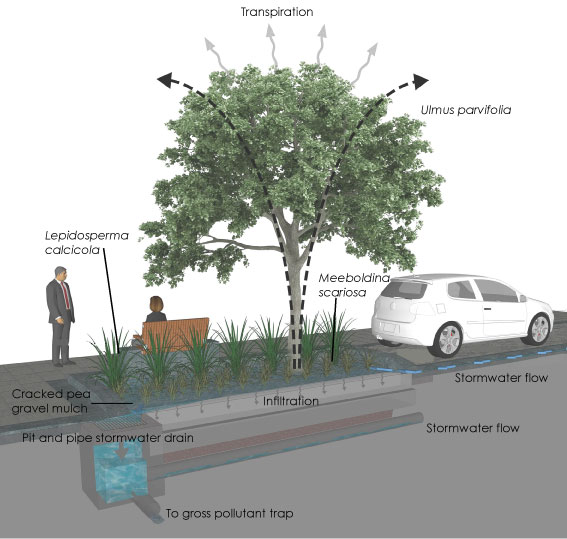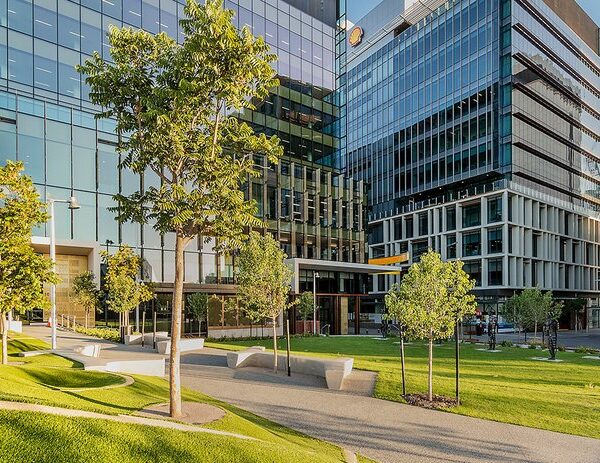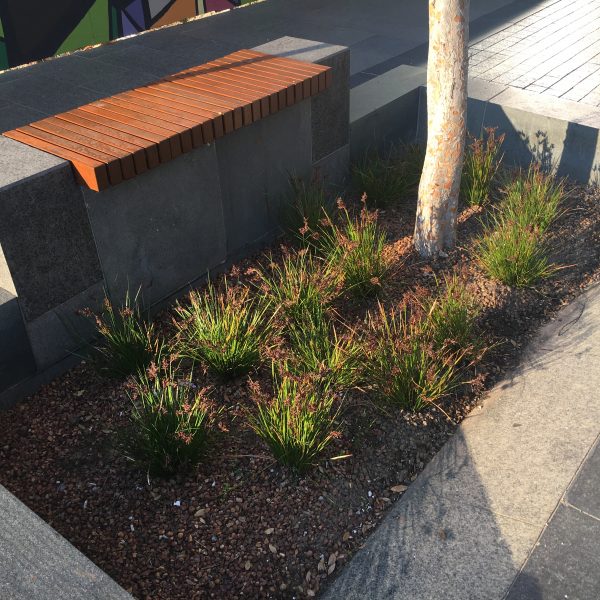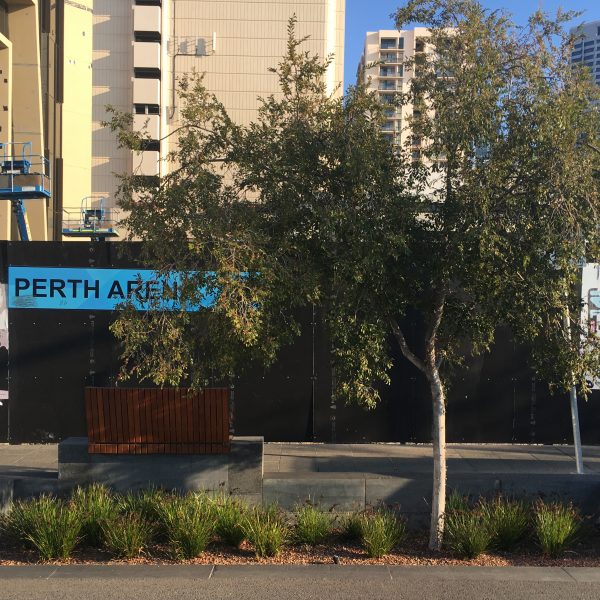Kings Square raingardens
Contact
Insight:
Project description
As part of the development’s approach to sustainability and total water cycle management, a network of raingardens were incorporated into the streetscape design to provide stormwater treatment, protect sensitive groundwater systems that flow into the nearby Swan River, improve the long term health of street trees, enhance amenity, and integrate with the surrounding built form and elements of the streetscape.

The drivers
Use street trees, groundcovers and bioretention media within raingardens to help capture contaminants brought in from the road during frequent, first-flush rain events
The innovations
Achievement of a 1:2 ratio of infiltration area to parking area; an accomplishment not attempted before in the ‘hard urban landscape’ of Perth.
- Raingarden sizing and layout: The raingardens are designed to fit the local streetscape context and dimensions, being sized for hydraulic efficiency and to fit into the cross sectional parking dimension between road crossing points. They are also located to accommodate surrounding alfresco dining and retail opportunities with shade, rest points and amenity provided by the vegetation and trees.
- Raingarden location to capture first flush: Each raingarden is positioned upstream of a traditional 'pit and pipe' stormwater gully drain to catch the first flush events which account for approximately 95% of rainfall. Larger events flow past the raingardens and into the overflow system.
- Dense understorey planting: Dense planting of eight plants per square metre assisted in providing a critical mass of initial vegetation. The vegetation plays a role in removing nutrients and binding pollutants (hydrocarbons, heavy metals, nutrients, dust and leaf litter) into the soil.
- Passive irrigation: Street and pedestrian pavements are graded to sheet stormwater into raingardens around trees and planting beds to promote passive irrigation of the vegetation.
- Use of sedge plantings: Meeboldina scariosa and Lepidosperma calcicola (both locally native) are used in the raingardens to treat the stormwater. Both species were common on the site prior to development.
- Deciduous trees with relatively small leaf size: Two deciduous trees (Ulmus parvifolia and Jacaranda mimosifolia) were selected. Ulmus parvifolia provides summer shade and winter solar access. The relatively small leaf size of these trees also reduces the likelihood of drainage system blockages.
The lessons
Transferability
The raingardens are appropriate in locations where there is adequate room in the street layout, gradients are suitable and the catchment area is appropriate for this approach (e.g. sheetflow across a road into kerb and gutters).
Project stats
Location
Perth, WA, Australia
Participants
Additional information
Contact
The outcomes
 Cities providing ecosystem services
Cities providing ecosystem services

- Native vegetation: The use of locally occurring species in the raingardens promotes local biodiversity.
- Bioretention: The soil media binds contaminants and stops these entering the groundwater (a sensitive receptor) or being carried into the nearby Swan River.
 Cities as water supply catchments
Cities as water supply catchments

- Passive irrigation: Passive irrigation design minimises imported water demands.
- Local aquifer recharge: Treated stormwater is delivered to local aquifer to recharge.
 Cities comprising water sensitive communities
Cities comprising water sensitive communities

- Improved local amenity: Improvements to local amenity and aesthetics is achieved through the planting of vegetation and provision of seating.
- Public awareness: The raingardens visually demonstrate to the public that a water sensitive approach provides multiple benefits to the community.
Business Case
| Costs | Benefits |
|
|
Interested in this solution?
We partner with small and large companies, government and industry in Australia and around the world.




Comments